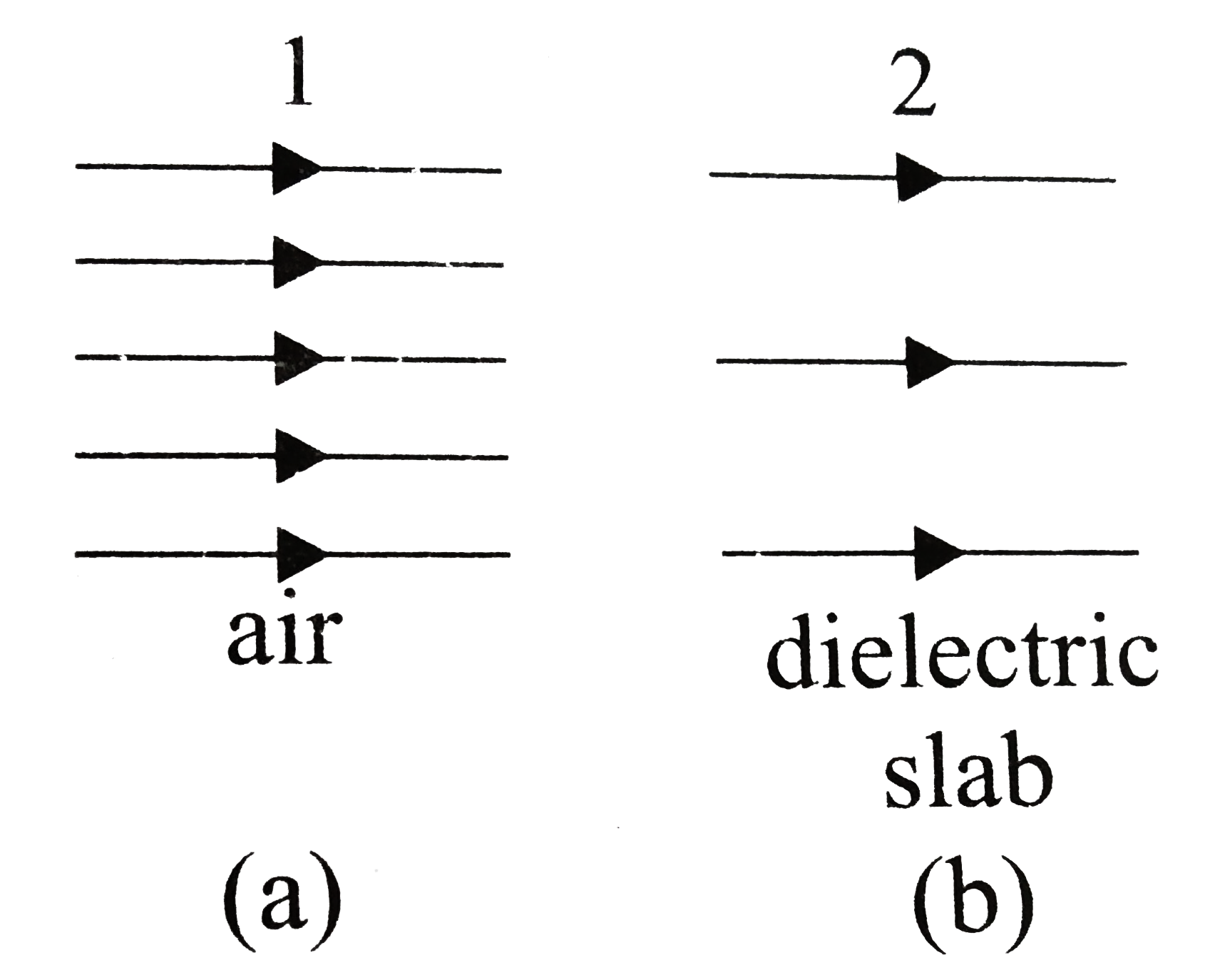How will electric field inside a dielectric change on polarisation?
To understand how the electric field inside a dielectric changes upon polarization, we can break down the explanation into a few clear steps:
1. Understanding Dielectric Polarization:
- A dielectric material is an insulator that can be polarized when subjected to an external electric field. Polarization refers to the alignment of dipole moments within the material, where positive and negative charges within the dielectric shift slightly in response to the electric field.
2. Formation of Dipoles:
- When an external electric field is applied to the dielectric, the positive charges within the dielectric tend to move towards the direction of the field, while the negative charges move in the opposite direction. This creates dipoles (pairs of equal and opposite charges separated by a distance) throughout the material.
3. Effect on Electric Field:
- The polarization of the dielectric leads to the formation of bound charges on the surfaces of the dielectric. The bound positive charges accumulate on one side, and the bound negative charges accumulate on the opposite side. This results in a net electric field due to these bound charges.
4. Net Electric Field Calculation:
- The total electric field inside the dielectric (E') can be expressed as the sum of the external electric field (E) and the electric field due to the polarization (Ep):
E′=E+Ep
- The electric field due to polarization (Ep) is typically in the opposite direction to the external electric field, which means it reduces the overall electric field inside the dielectric.
5. Conclusion:
- Therefore, the electric field inside a polarized dielectric is less than the external electric field. The relationship can be quantified using the dielectric constant (κ), where:
E′=Eκ
- Here, κ > 1, indicating that the electric field inside the dielectric is reduced compared to the external field.
- A dielectric material is an insulator that can be polarized when subjected to an external electric field. Polarization refers to the alignment of dipole moments within the material, where positive and negative charges within the dielectric shift slightly in response to the electric field.
- When an external electric field is applied to the dielectric, the positive charges within the dielectric tend to move towards the direction of the field, while the negative charges move in the opposite direction. This creates dipoles (pairs of equal and opposite charges separated by a distance) throughout the material.
- The polarization of the dielectric leads to the formation of bound charges on the surfaces of the dielectric. The bound positive charges accumulate on one side, and the bound negative charges accumulate on the opposite side. This results in a net electric field due to these bound charges.
- The total electric field inside the dielectric (E') can be expressed as the sum of the external electric field (E) and the electric field due to the polarization (Ep):
E′=E+Ep
- The electric field due to polarization (Ep) is typically in the opposite direction to the external electric field, which means it reduces the overall electric field inside the dielectric.
- Therefore, the electric field inside a polarized dielectric is less than the external electric field. The relationship can be quantified using the dielectric constant (κ), where:
E′=Eκ
- Here, κ > 1, indicating that the electric field inside the dielectric is reduced compared to the external field.
Topper's Solved these Questions
- BOOK - MODERN PUBLICATIONCHAPTER - ELECTROSTATIC POTENTIAL AND CAPACITANCE EXERCISE - Revision Exercises (Additional Questions)10videos
ELECTROSTATIC POTENTIAL AND CAPACITANCE
- BOOK - MODERN PUBLICATIONCHAPTER - ELECTROSTATIC POTENTIAL AND CAPACITANCE EXERCISE - Revision Exercises (Fill in the Blanks)11videos
ELECTROSTATIC POTENTIAL AND CAPACITANCE
- BOOK - MODERN PUBLICATIONCHAPTER - ELECTROSTATIC POTENTIAL AND CAPACITANCE EXERCISE - Higher Order Thinking Skills & Advanced Level (QUESTIONS WITH ANSWERS)10videos
ELECTROSTATIC POTENTIAL AND CAPACITANCE
- BOOK - MODERN PUBLICATIONCHAPTER - ELECTROMAGNETIC WAVESEXERCISE - CHAPTER PRACTICE TEST14videos
ELECTROMAGNETIC WAVES
- BOOK - MODERN PUBLICATIONCHAPTER - MAGNETISM AND MATTEREXERCISE - CHAPTER PRACTICE TEST FOR BOARD EXAMINATION16videos
MAGNETISM AND MATTER
Similar Questions
Knowledge Check
- Question 1 - Select One
Due to polarisation the electric field inside a dielectric is
AdecreasedBincreasedCremains sameDmay increase or may decrease depending the upon material - Question 2 - Select One
What changes on polarisation of light ?
AFrequencyBWavelengthCPhaseDIntensity - Question 3 - Select One
In figure , there are two patterns of electric field lines absent of dielectric and in presence of dielectric slab. The relative permittivity of the dielectric slab is
 , A53B53×ε0C4D52
, A53B53×ε0C4D52
Why does the electric field inside a dielectric decrease when it is placed in an external field ?
View SolutionWhy does the electric field inside a dielectric decrease when it is placed in an external field ?
View SolutionElectric Field Inside The Sphere
View SolutionDeduce an expression for the electrostatic energy stored in a capacitance 'C' and having charge Q
How will the electric field inside capacitor be affected when it is completely filled with a dielectric material of dielectric constant K ?View SolutionWith the help of neat diagrams, explain how the nonpolar dielectric material is polarised in external electric field of increasing intensity. Define polarisation in dielectrics.
View Solution

